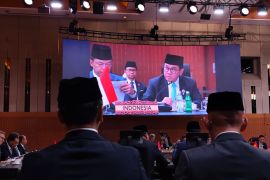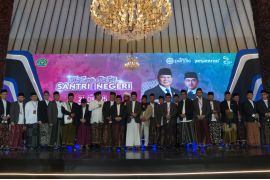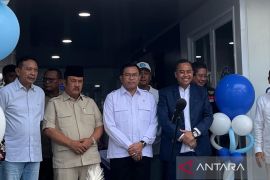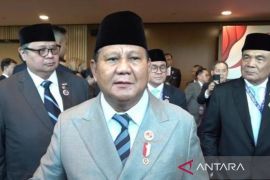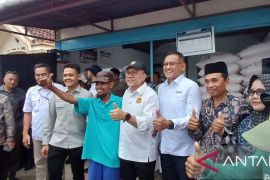To address such a problem, an agreement was recently reached during a meeting to create an integrated database to synergize data on poverty handling sourced from various ministries.
"So, while informing the public about a program, there would no longer be any overlapping or invalid (data)," Coordinating Minister for Human Development and Culture Puan Maharani stated in Jakarta, February 4, 2016, after attending a plenary meeting on poverty reduction efforts chaired by Vice President Jusuf M. Kalla.
With the presence of a consolidated database, the government plans to integrate its poverty reduction programs, such as the Hopeful Family Program (PKH), the Indonesian Health Card (KIS), the Social Protection Card (KPS), and the Indonesian Smart Card (KIP), with the data available in the electronic identity (e-ID) cards.
"So, we want to integrate all data to develop a single database, and its usage can help to synergize the existing programs," she explained.
The poverty alleviation program through those social allowance cards is a flagship program of the administration of President Joko Widodo and Vice President Jusuf Kalla, aimed at improving the welfare levels among the disadvantaged.
Bambang Widianto, executive secretary of the National Team for Acceleration of Poverty Reduction (TNP2K), which is headed by Kalla, said the latest data revealed that the poverty rate during the September 2014 to September 2015 period had increased, thereby leading to a social gap in urban areas, in particular.
"Among factors that created the gap include accessibility to education and health services as well as basic infrastructure and uneven prosperity growth due to job quality differences," he explained.
Various programs carried out by the government to address poverty had been able to improve the welfare of the poor.
However, the hikes in the prices of basic commodities have significantly contributed to the decrease in the purchasing power of the poor, and as a result, the poverty rate had increased.
"Therefore, the efforts to reduce the poverty rate must be supported by concrete measures to control the prices of staple food commodities," he stated.
Vice President Jusuf Kalla explained that ministries and state institutions should use data from the Central Bureau of Statistic (BPS) as a reference in implementing poverty reduction programs.
"There must be data for reference, and later, it should be shared, so that there are no disparities," Kalla affirmed.
By having a consolidated database as a common reference, every relevant institution could play a role in reducing the poverty rate, he said in the meeting.
The meeting was attended by Coordinating Minister for Human Development and Cultural Affairs Puan Maharani, Social Affairs Minister Khofifah Indar Parawansa, Health Minister Nila F. Moeloek, and Manpower Minister Hanif Dhakiri, in addition to Education and Culture Minister Anies Baswedan, Finance Minister Bambang Brodjonegoro, Coordinating Minister for Economic Affairs Darmin Nasution, and National Development Planning Minister Sofyan Djalil. The others who attended the meeting were Religious Affairs Minister Lukman Hakim, and Villages, Disadvantaged Regions and Transmigration Minister Marwan Jafar.
Meanwhile, the social affairs ministry is coordinating with other concerned ministries and institutions in their efforts to reduce poverty to avoid overlapping programs.
"Each one of us is conducting a mapping, so that interventional steps taken by the directorate in the Social Affairs Ministry to fight poverty do not overlap with those by other ministries and institutions," Social Affairs Minister Khofifah Indar Parawansa said earlier.
This year, the ministry will be establishing a directorate general on poverty handling that will comprise a secretariat, an urban poverty handling directorate, a rural poverty handling directorate, and a directorate for handling poverty in coastal, small islands, and border areas.
"This is in fact a mandate of Law No. 13 of 2011 on Poverty Handling," she added.
In early January 2016, the Central Statistics Agency (BPS) disclosed that the number of Indonesians living in poverty rose by 780 thousand to 28.51 million in September 2015, from 27.73 million in September 2014.
The number of poor people rose significantly during the September 2014 to March 2015 period due to a fuel price hike in November 2014 and the impact of economic slowdown, BPS Chairman Suryamin said.
"Compared to September 2014, (the number of poor people) in September 2015 rose by 0.78 million," he said.
The inflation rate in the September 2014 to March 2015 period was recorded at 4.03 percent, with rural inflation reaching 4.4 percent over the same period, according to BPS data.
Compared to September 2014, rice prices rose 14.48 percent to Rp13,089 per kilogram and the farmers exchange rate weakened by 1.34 percent in March 2015.
However, the number of residents not belonging to poor category began to increase in March 2015 after the governments social program was implemented, he added.
The decline was also the result of the governments efforts to anticipate inflation in March 2015, he said.
Therefore, the number of poor people dropped by 80 thousand during the March 2014 to September 2015 period.
"Admittedly, if we look at data in September last year, the number of poor people did increase but if we look at data in March 2015, it declined," he said. ***4***
(T.F001/A/KR-BSR/O001) 06-02-2016 15:37:11
Reporter: Fardah
Editor: Fardah Assegaf
Copyright © ANTARA 2016

